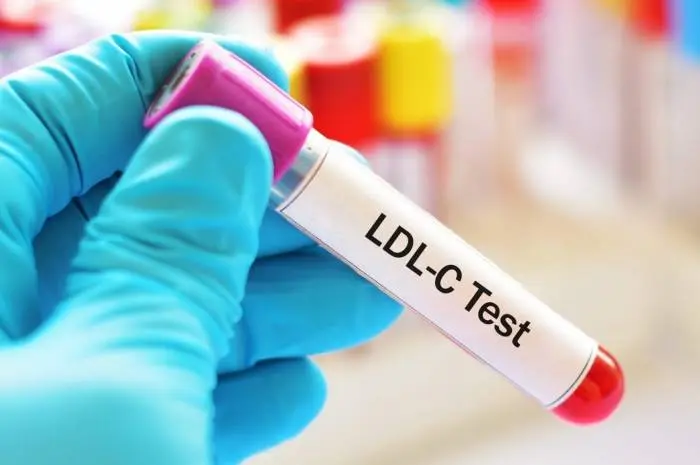Low-Density Lipoprotein Cholesterol, or LDL cholesterol, often referred to as ‘bad cholesterol,’ plays a crucial role in the body’s metabolic processes. It is integral in understanding an individual’s risk for cardiovascular diseases, particularly heart attacks and strokes.
The LDL cholesterol level can provide significant insight into one’s overall health, but it’s not just about the numbers; understanding what these values imply and how to manage them is vital for anyone concerned about their heart health.
1. LDL Cholesterol: The ‘Bad’ Cholesterol
Cholesterol, a waxy substance found in your body’s cells, is essential for the body to function properly. It’s involved in the production of hormones, vitamin D, and substances that help digest food. However, when it comes to cholesterol, it’s all about balance.
Cholesterol travels through your bloodstream in lipoproteins. There are two main types: low-density lipoprotein (LDL) and high-density lipoprotein (HDL).
While HDL, or ‘good’ cholesterol, carries cholesterol away from the arteries back to the liver, LDL transports cholesterol particles throughout your body, leading to cholesterol buildup in your artery walls—a condition known as atherosclerosis. This increases the risk of cardiovascular diseases, which is why LDL is often termed as ‘bad’ cholesterol.
Read Also: Recommendations for the Latest and Most Popular Original Chanel Bag Models
2. Normal Range for LDL Cholesterol
The range of what is considered ‘normal’ for LDL cholesterol levels can vary based on an individual’s overall health and other risk factors. The American Heart Association provides a general guideline as follows:
- Optimal: Less than 100 milligrams per deciliter (mg/dL)
- Near or above optimal: 100-129 mg/dL
- Borderline high: 130-159 mg/dL
- High: 160-189 mg/dL
- Very high: 190 mg/dL or above
These levels, however, need to be interpreted within the broader context of an individual’s overall health. For instance, if a person has existing heart disease or is at high risk (such as individuals with diabetes or familial hypercholesterolemia), their healthcare provider may recommend maintaining an LDL level significantly lower than 100 mg/dL.
3. Factors Affecting LDL Levels
Several factors can affect an individual’s LDL cholesterol levels, some of which can be controlled, while others cannot. Uncontrollable factors include age, gender, and genetics.
Cholesterol levels generally increase with age, and men tend to have higher levels of LDL cholesterol than women until menopause, after which women’s LDL levels can surpass those of men.
Controllable factors include diet, weight, physical activity, and smoking. Eating a diet high in saturated and trans fats can increase LDL levels. Likewise, being overweight or obese and leading a sedentary lifestyle can raise these levels.
Smoking can lower HDL (‘good’) cholesterol and increase LDL levels, increasing the overall risk of heart disease.
4. LDL Cholesterol and Cardiovascular Risk
As LDL cholesterol levels increase, so does the risk of cardiovascular diseases. High LDL levels can lead to a buildup of cholesterol-laden plaque in the artery walls, a condition known as atherosclerosis.
Over time, this plaque hardens and narrows the arteries, limiting oxygen-rich blood flow to your organs and other parts of your body, a state known as ischemia. When this affects the arteries supplying the heart, it can result in chest pain (angina) or a heart attack. If the arteries supplying the brain are affected, it can lead to a stroke.
5. Managing LDL Cholesterol Levels
To manage LDL cholesterol levels effectively, a combination of lifestyle modifications and medication (if necessary) is often required.
Lifestyle modifications involve adopting a heart-healthy diet, maintaining a healthy weight, engaging in regular physical activity, and abstaining from tobacco. Dietary changes may include reducing saturated and trans fats, increasing soluble fiber, and adding omega-3 fatty acids.
Regular physical activity can help raise HDL cholesterol and lower LDL cholesterol and is generally recommended for 30 minutes a day, five days a week.
When lifestyle modifications aren’t enough, your healthcare provider may prescribe medication. Statins are the most commonly prescribed drugs for lowering LDL cholesterol. Other medications include cholesterol absorption inhibitors, bile-acid-binding resins, and PCSK9 inhibitors.
Regular cholesterol screening is also vital in managing LDL cholesterol levels. Most adults should have their cholesterol checked every four to six years, and individuals with a higher risk for heart disease may require more frequent screenings.
Hot Topics: Latest Stylish and Luxurious Original Coach Bag Model
Conclusion
While high LDL cholesterol levels can increase the risk of heart disease and stroke, the good news is that they can be effectively managed through lifestyle changes and medication when necessary.
Understanding the ‘normal’ LDL cholesterol range and how it relates to overall health can empower individuals to make informed decisions about their healthcare.
Regular screenings, a balanced diet, physical activity, maintaining a healthy weight, and not smoking are all part of a proactive approach to heart health. Always consult with a healthcare provider for personal advice regarding cholesterol management.




